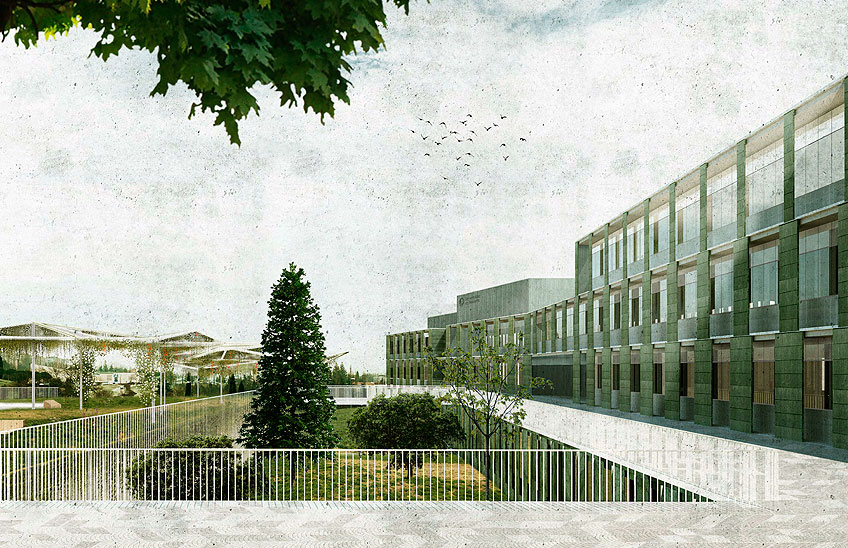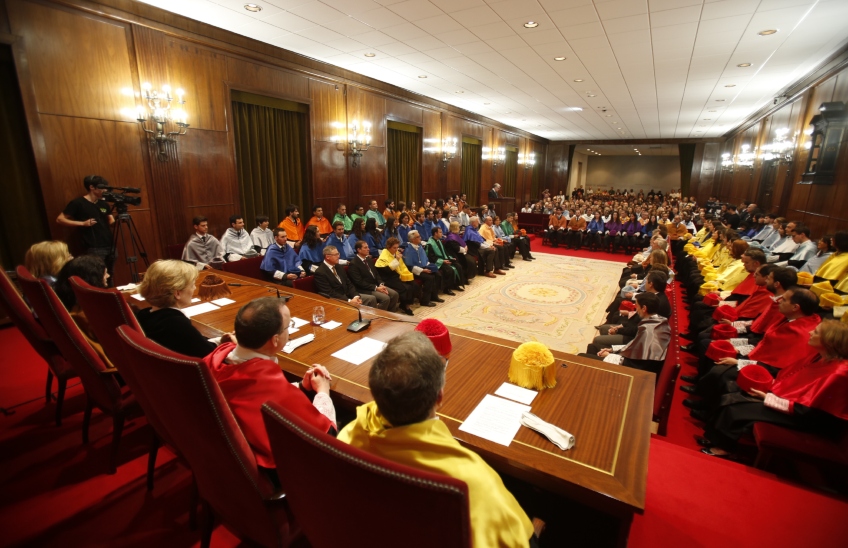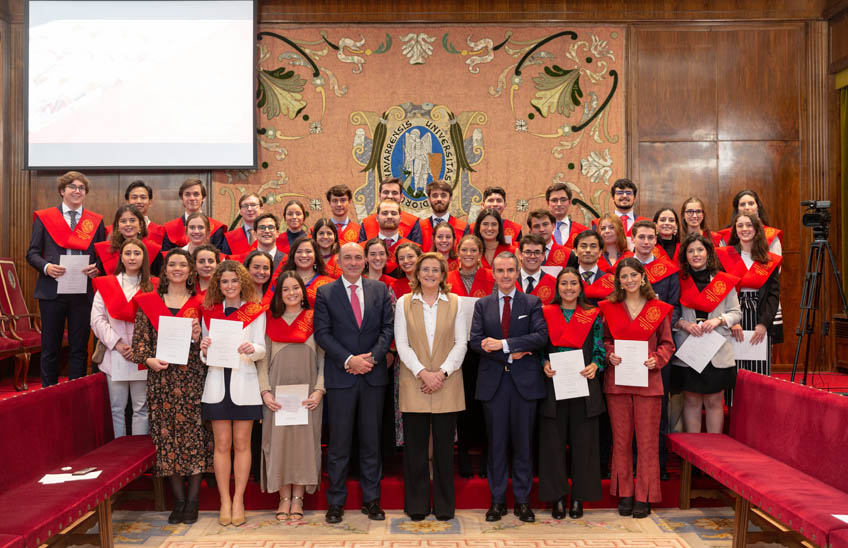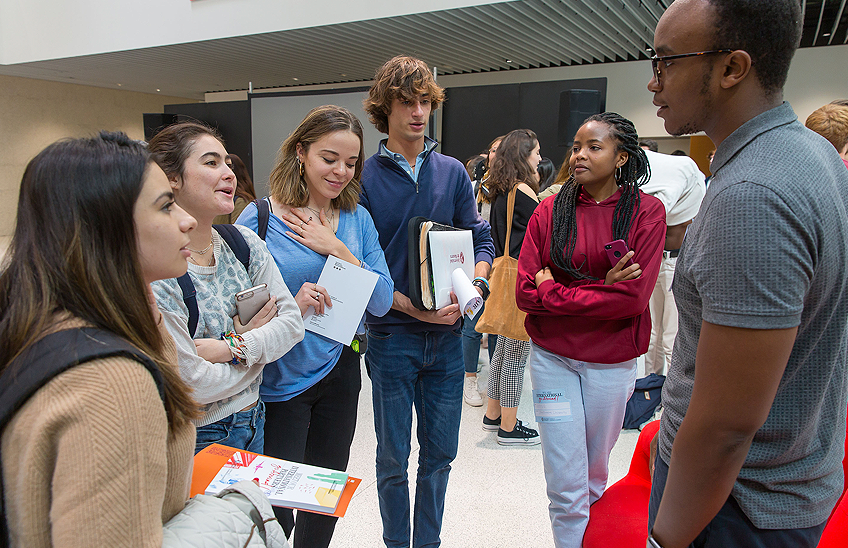A University study will assess the adaptive capacity of housing in Pamplona and Seville to climate change.
The project ClimateReady will compare residential buildings in both cities and offer alternatives to, among other things, the indiscriminate use of air conditioning.
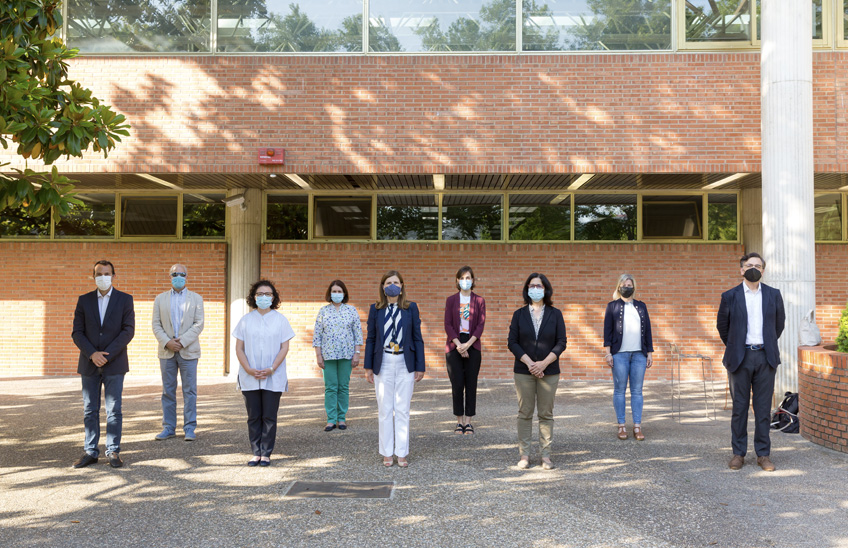
PhotoManuelCastells/From left to right, the researchers from the University of Navarra participating in project: Germán Ramos, Fernando Echarri, Dolores López, Purificación González, Ana Sánchez-Ostiz, Ainhoa Arriazu, Aurora Monge, Anabel Vitas and Carlos Fernández-Bandera (in the picture Juanjo Pons, Juan Luis Roquette, Maira Bes, Juan Echeverría and Joaquín Torres are missing).
16 | 06 | 2021
A team multidisciplinary of researchers of the University of Navarra -coordinated by the School of Architecture- is looking for the participation of the inhabitants of the cities of Pamplona and Seville to take part in the study ClimateReady project The aim of the study is to assess the adaptive capacity of residential buildings in both cities to the overheating that climate change is already causing.
This project - which last year obtained funding from the Ministry of Science, Innovation and Universities through the call for proposals "Proyectos de research and development+i Retos research" - will run for three years. In the current phase, the researchers - from the universities of Navarre, Seville and Alicante - are asking the inhabitants of Pamplona and Seville to answer a simple questionnaire to be sent to partnership . survey during the month of June.
"The choice of the two cities was made because it allows us to compare regions with very different climatic conditions - Pamplona, with buildings designed for an eminently cold climate and generally mild summers, and Seville, for a much hotter climate. So, in the face of tougher summer conditions and heat waves, in Pamplona in residential buildings the aim is to reduce indoor overheating as much as possible through passive and usage measures; while in Seville, where the resource air conditioning is widespread due to the high temperatures, the aim is to reduce the energy demand of the systems as much as possible", explains one of the main researchers of project, professor and director of Master's Degree in design and management Environmental Buildings of the University of Navarra, Ana Sánchez-Ostiz.
Measures to improve health and save energy: adequate ventilation, awnings, etc.
Monitoring will also begin this summer in 10 dwellings in each city of different typologies: from blocks of flats to single-family houses, built before 1980, before 2006 and up to the present day. "We intend that the project ClimateReady provides the perspective of the real status of the housing stock and complements other projects already underway in Navarra - such as LIFE NADAPTA at regional level and the Energy Transition and Climate Change Strategy 2030 of Pamplona, at city level - taking into account that overheating in homes can have a direct effect on people's health. And, in particular, of the most vulnerable population, such as the elderly and children", emphasises another of the researchers, Dolores López, lecturer at department of Geography at the University of Navarra.
One of the final objectives of project will be to detail simple measures that help to combat overheating - especially during heat waves, which are becoming increasingly frequent in both cities and in the rest of Spain - in order to improve well-being in the home and thus people's health and energy savings. "Economic measures such as adequate ventilation (many people leave the house on at the wrong time), always having a thermometer in the house (it is essential to know what temperature it is in order to ventilate at the best time); as well as the installation of awnings and other solar protection, are very effective, and not just the indiscriminate resource of air conditioning, which is often running when it is not needed or even with the windows open", saysAurora Monge, also principal investigator of project , professor at School of Architecture of the University of Navarra and expert in this field.
The study, coordinated by the School of Architecture, also involves researchers from the School of Philosophy and Letters, the School of Medicine and the Museum of the academic centre.

